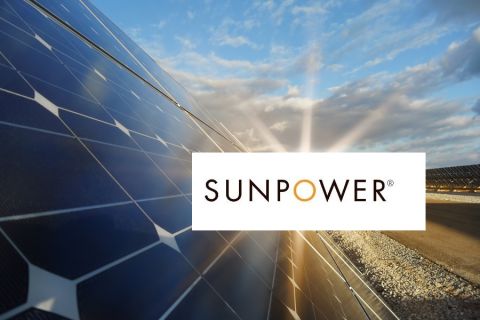Spectraseis has developed a new type of passive seismic method leveraging the low-frequency ambient waves that are present everywhere in the Earth's crust, continuously generated by natural events such as ocean wave movements and micro-tectonic activity. The company has performed extensive research and development to discover how these waves are shaped into specific wave-field patterns by hydrocarbon reservoirs. They discovered that source-driven oscillations and shear wave attenuation are two of the mechanisms at play. Advances in high-sensitivity broadband instrumentation and signal processing methods have now allowed these spectral signatures to be accurately identified and mapped, providing an important new layer of information for exploration, appraisal and production decisions. As a result, the company has launched proprietary new technology called Hydrocarbon Micro-tremor Analysis (HyMAS).
This investigates permanent signal perturbations in the 1-20 Hz range to extract a new type of geophysical information. Until now, this part of the frequency spectrum was systematically disregarded as noise. HyMAS analyzes the modification of the background wave spectrum which occurs when low-frequency waves propagate through hydrocarbon-bearing reservoirs. By identifying specific spectral signatures of the interactions between the reservoir rock and its fluid content, HyMAS provides direct hydrocarbon indication. Combined with Spectraseis' software suite, the new technology can map the presence and distribution of hydrocarbons within a survey area.
This information enables oil and gas companies to reduce exploration and development risk, save money on non-productive drilling and surveying activities, and bring forward production.
Spectraseis officials say that they have completed successful trials and are confident in their ability to deliver commercial acquisition, processing and interpretation applications to reduce drilling risk and increase exploration and production success rates with this new data. By focusing on hydrocarbon content rather than structure, HyMAS has the potential to answer questions that other geophysical methods cannot. www.spectraseis.com
 GE compressor selected for pilot project
GE compressor selected for pilot project
Technology jointly developed by GE Oil & Gas and Aker Kværner has been selected for a pilot program in Norway's Ormen Lange natural gas field that will be the first subsea compression project of its kind in the world.
The contract for the pilot project was awarded to Aker Kværner by Norsk Hydro, one of the owners of the natural gas field, the largest under development on the Norwegian continental shelf.
Working with Aker Kværner, GE Oil & Gas has completed the conceptual design of a 12-MW subsea compressor, the largest ever developed for subsea applications, and is set to begin construction of the machine to be tested in the pilot project.
The aim of the pilot project is to evaluate whether a subsea compression station, at approximately 2,952 ft (900 m) of water depth, is a viable alternative to an offshore platform. In the past, it has not been profitable to exploit many natural gas subsea fields, particularly those in depths of 1,640 ft (500 m) or more, largely due to the cost of conventional offshore platforms.
Subject to the Ormen Lange partners' final approval, Aker Kværner's subsea compression station pilot project will undergo controlled endurance tests from 2009 to 2011 at a gas treatment facility in Nyhamna, Norway.
Since the early 1990s, GE Oil and Gas has been working to develop a robust subsea compression system, ranging from the testing of the first 850-kW subsea compressor unit in 1992 to today's generation of advanced high-speed, oil-free subsea compressors designed for the economic recovery of natural gas from deepwater fields. A 2.5-MW conceptual design, called the Blue-C Subsea Centrifugal Compressor, was unveiled at the Offshore Northern Seas Conference in 2002. The new high-speed, oil-free, 12-MW subsea compressor has evolved from that technology.
To address the constraints of a subsea application, the new design has been focused on the optimization of the compression train, featuring a vertical and compact configuration to minimize the footprint and to facilitate machine operation with good drainage of possible liquid parts.
Because reliability of the compression train is a key requirement for subsea applications, the equipment was designed to minimize the number of critical parts.
The new subsea compressor module, an extremely compact solution, is equipped with active magnetic bearings and includes a high-speed electric motor directly coupled with a centrifugal compressor in a vertical configuration.
The Ormen Lange subsea compressor module is a turnkey system designed to be installed at a water depth of 2,788 ft
to 3,280 ft (850 m to 1,000 m) and at a distance of 75 miles (120 km) from the Nyhamna onshore terminal. www.gepower.com/businesses/ge_oilandgas/en/index.htm
CaTS reservoir monitoring technology
Expro International Group had a successful application of its Cableless Telemetry System (CaTS) for the monitoring of the reservoir pressure and temperature response in an abandoned subsea well. The CaTS technology was successfully applied in the Clair Ridge appraisal well 206/8-T, operated by BP Exploration Ltd. in the UK North Sea.
CaTS is a revolutionary development in the field of reservoir monitoring and control that allows real-time information to be transmitted to and from downhole without the use of cabling or wireline in the well. Its two-way transmission capability enables the remote control of downhole instrumentation, opening the path to the radical redesign of downhole completions.
The CaTS system was installed in the 206/8-T well in early June 2006 as part of the final abandonment process. CaTS transmits its data from the reservoir to the seabed using Expro's market-leading wireless telemetry technology. The data is collected, processed and stored at the seabed using a specially developed CaTS subsea receiver. The data is transmitted from the receiver, on demand, to a supply vessel located overhead the abandoned well. A first data interrogation visit took place in early July, and post abandonment reservoir pressure and temperature data was successfully uploaded for analysis by the reservoir engineers. Further data interrogation visits are planned for later in the year.
By using CaTS in this application, it is possible to monitor the long-term reservoir pressure build-up subsequent to the production tests performed during the Drill Stem Test and also to monitor for any interference effects resulting from production or injection activity on the Clair platform located nearby. This information will assist BP in gaining a better understanding of the overall structure of the Clair reservoir. www.exprogroup.com
Riserless Mud Recovery technology
The first North Sea oil well employing Ability Subsea's advanced Riserless Mud Recovery (RMR) technology has been successfully drilled by Total E&P UK PLC on the Jura West 3/15-10 prospect. The well was drilled using the Sedco 714 semisubmersible rig in 370 ft (113 m) of water.
RMR technology has been developed by Ability Subsea - part of the Norway-based oil technology and services group Ability Group ASA - as a means of recirculating and re-using drilling fluids. Benefits of the technology include cost savings from reduced operating time and reduced environmental impact from avoided discharges to the sea.
Total E&P UK PLC acknowledged a significant time saving over the previous technology used to drill similar 26-in. hole sections and regarded the implementation as very successful. The company plans further deployment of the technology later this year.
Use of the RMR technology is growing rapidly. For instance it has been recently deployed off Sahkalin Island in Eastern Russia and in the Barents Sea where no drilling discharge is permitted. Other applications have been in areas of poor hole stability where an engineered fluid system is required. One of the main advantages of running the system is the ability to push planned casing setting depths deeper and hence simplify casing design.
RMR has been deployed in water depths of up to 1,312 ft (400 m) and Ability Subsea has now started development work with two leading oil corporations to make the technology operational in water depths up to 4,920 ft (1,500 m). Field trials at these depths are planned in 2007. www.agr.no
Recommended Reading
TPG Adds Lebovitz as Head of Infrastructure for Climate Investing Platform
2024-02-07 - TPG Rise Climate was launched in 2021 to make investments across asset classes in climate solutions globally.
enCore Energy Appoints Robert Willette as Chief Legal Officer
2024-02-01 - enCore Energy’s new chief legal officer Robert Willette has over 29 years of corporate legal experience.
Nebula Energy Buys Majority Stake in AG&P LNG
2024-01-31 - AG&P will now operate as an independent subsidiary of Nebula Energy with key offices in UAE, Singapore, India, Vietnam and Indonesia.
SunPower Begins Search for New CEO
2024-02-27 - Former CEO Peter Faricy departed SunPower Corp. on Feb. 26, according to the company.
JMR Services, A-Plus P&A to Merge Companies
2024-03-05 - The combined organization will operate under JMR Services and aims to become the largest pure-play plug and abandonment company in the nation.





